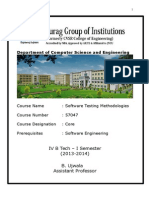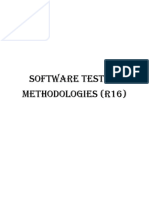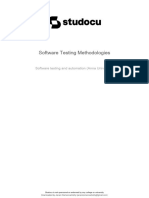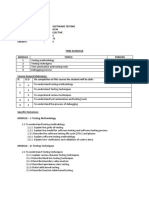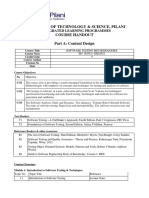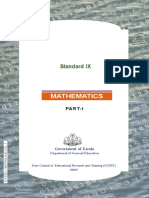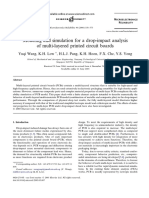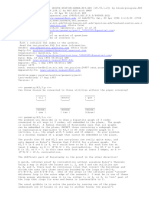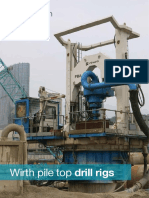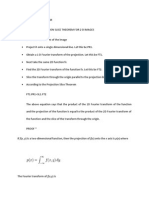L T P C
VII SEMESTER
3 - - 3
20XXXXXX : SOFTWARE TESTING METHODOLOGIES
Objectives:
To study the fundamental concepts of software testing which includes objectives, process, criteria,
strategies, and methods.
To discuss various software testing types and levels of testing like black and white box testing along
with levels unit test, integration, regression, and system testing.
It also helps to learn the types of bugs, testing levels with which the student can very well identify a
bug and correct as when it happens.
It provides knowledge on transaction flow testing and data flow testing techniques so that the flow
of the program is tested as well.
To learn the domain testing, path testing and logic based testing to explore the testing process
easier.
Course outcomes:
CO1: Understand and apply basic software testing techniques, including bug classification and path
testing using flow graphs, to improve software quality and reliability.(K2)
CO2:Students will be able to effectively apply various transaction flow testing techniques to verify
the integrity of transaction sequences and identify potential issues in software systems.(K3)
CO3:Students will develop the ability to evaluate the interaction between domains and interfaces,
enabling them to identify potential issues arising from the integration of different system
components.(K2)
CO4:Students will understand path products and path expressions and will be able to use reduction
procedures to optimize paths for more efficient test case creation.(K4)
CO5:Students will understand state concepts and state graphs, learning how to design effective state
graphs for software testing.(K2)
UNIT - I Introduction: Purpose of testing,Dichotomies,model for testing,consequences of bugs,
taxonomy of bugs,Flow graphs and Path testing:- Basics concepts of path testing, predicates, path
predicates and achievable paths, path sensitizing, path instrumentation, application of path testing.
UNIT - II Transaction Flow Testing: transaction flows, transaction flow testing techniques. Dataflow
testing:- Basics of dataflow testing, strategies in dataflow testing,application of dataflow testing.
UNIT - III Domain Testing: domains and paths, Nice & ugly domains, domain testing, domains and
interfaces testing, domain and interface testing, domains and testability.
UNIT - IV: Paths,Path products and Regular expressions: path products &pathexpression, reduction
procedure, applications, regular expressions & flow anomaly detection. Logic Based Testing:-
overview,decision tables,path expressions,kv charts, specifications.
�UNIT-V: State, State Graphs and Transition testing: state graphs, good & bad state graphs, state
testing, Testability tips. Graph Matrices and Application:-Motivational overview, matrix of graph,
relations, power of a matrix, node reduction algorithm, building tools
TEXT BOOKS:
1. Software Testing techniques – Boris Beizer, Dreamtech, second edition.
2. Software Testing Tools – Dr.K.V.K.K.Prasad, Dreamtech.
REFERENCES BOOKS:
1. The craft of software testing – Brian Marick, Pearson Education.
2. Software Testing Techniques – SPD(Oreille)
3. Software Testing in the Real World – Edward Kit, Pearson.
4. Effective methods of Software Testing, Perry, John Wiley.
5. Art of Software Testing – Meyers, John Wiley.





